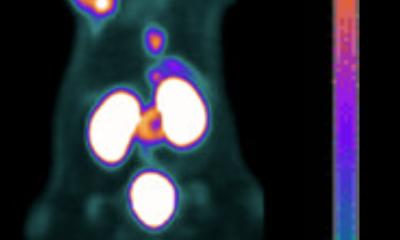
Image source: Shutterstock/Sebastian Kaulitzki
News • Hormone-Upregulated lncRNA
Early detection of prostate cancer and alternative to invasive biopsies
Pioneering research conducted by University of Virginia in collaboration with Manchester UK based APIS Assay Technologies Ltd has discovered Hormone-Upregulated lncRNA within the lymphocyte-specific protein tyrosine kinase (HULLK) is detectable in non-invasive prostate cancer patient samples.
The breakthrough data provides a potential new approach to address the unmet medical need of early diagnostics for prostate cancer, in combination with avoiding the invasive cancer tissue sample collection from biopsy.
Dr. Daniel Gioeli, Associate Professor, Microbiology, Immunology, and Cancer Biology at the University of Virginia, has shown that HULLK could be isolated from urine of prostate cancer patients and therefore provides a major advantage compared to current invasive sample collection.
The data on the detection of HULLK in urine samples from patients with high grade prostate cancer (PCa) will be presented by Gioeli during the 2020 Annual Meeting of the Society for Basic Urologic Research, Inc (SBUR), Saturday November 14th.
APIS Assay Technologies and the University of Virginia entered into a Research Agreement in December 2019, after optioning the HULLK technology, which is described in a previous publication from Gioeli´s Group (Ta et al, Molecular Cancer, 18:113, 2019) demonstrating the potential role of this biomarker in FFPE samples from PCa patients.
HULLK an unannotated lncRNA is within exon six and the 3’UTR of the LCK gene, is dramatically upregulated by androgen in a dose-dependent manner, and this hormone-induced increase is completely blocked by the anti-androgen enzalutamide. Remarkably, there was a significant positive correlation between HULLK expression and high-grade PCa in three independent cohorts: the University of Virginia, the University of Texas Southwestern, and The Cancer Genome Atlas.
Gioeli said: "Virtually all patients with metastatic prostate cancer (PCa) will relapse and develop lethal castration-resistant prostate cancer (CRPC)". The new data being presented, continues to support the hypothesis on the potential use of HULLK as a biomarker for PCa.
"The latest data, which demonstrates the presence of this biomarker in non-invasive biofluids such as urine, is an exciting step forward" stated Ian Kavanagh, COO, of APIS Assay Technologies. "Our intention at APIS Assay Technologies is to implement HULLK into a clinically relevant signature for early detection of patients with metastatic prostate cancer and provide a guidance for further treatment."
The overall goal of the collaboration between UVA and APIS is to address the unmet medical need associated with PCa and evaluate the level of HULLK in PCa patients in order to establish the parameters necessary for a clinical trial demonstrating the effectiveness of HULLK as a relevant Biomarker.
Recommended article

News • Early detection
Prostate cancer risk: The role of relatives
If a father or brother has prostate cancer, his son or brother has an increased risk of this type of cancer. Whether this also applies when precancerous stages of this cancer are discovered in relatives has not yet been known. Now scientists have analyzed data from more than six million men to find out how high the risk of prostate cancer is in this case. Researchers at the German Cancer Research…
Dr. Joachim Schorr, CEO added: "Overall lncRNAs are emerging as critical regulatory elements of many cellular biological processes, that’s why APIS is also working with other lncRNA biomarkers in additional cancer related indications."
Despite most cancer studies have been focused on protein-coding genes, the evidence that about 97% of human genome consists of non protein-coding sequences led scientists to investigate the untranslated transcripts, called non-coding RNAs (ncRNAs). The un- translated transcripts, called non-coding RNAs (ncRNAs) can be classified in short (19–31 nucleo- tides), mid (20–200 nucleotides) and long (> 200 nu- cleotides) based on their length. long-ncRNAs (lncRNAs), which represent the largest class of non- coding transcripts with about 55,000 genes along the human genome.
lncRNAs may regulate gene expression through their interaction domains for DNA, mRNAs, miRNAs and proteins. The ncRNAs have cell type, tissue and cancer specificity, thus RNA profiling has become a mean to identify useful biomarkers of tumor development, progression and metastasis. Although miRNAs represent the most widely investigated ncRNAs, lncRNAs are emerging as cancer key regulators (Grillone et al. Journal of Experimental & Clinical Cancer Research (2020) 39:11).
LncRNA expression profiles can also identify clinically relevant cancer subtypes that predict tumor behavior and disease prognosis, which defines them to very promising diagnostic and therapeutic biomarkers.
With nearly one in every five men diagnosed during their lifetime, prostate cancer (PCa) is a world wide common disease. The implementation of screening and aggressive treatment has led to an improved survival rates, while "overtreatment" and treatment-related side effects can influence the quality of life for survivors and has come under considerable controversy over the last decade. (Mo.Med 2018 Mar-Apr; 115(2): 131.)
Source: University of Virginia
13.11.2020










